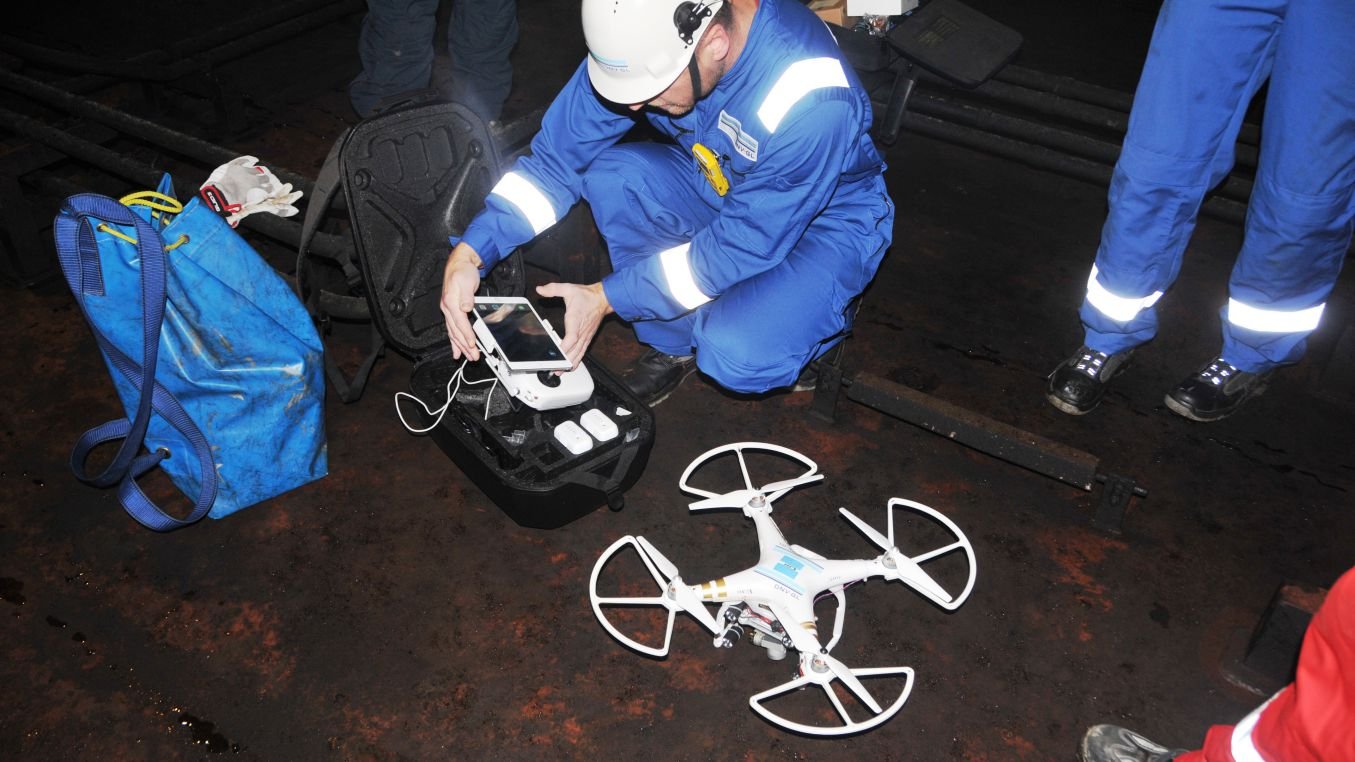DNV Tests Drones For Hull Surveys

DNV GL has announced testing of drones for use by the classification society during hull surveys. Its team in Gdansk, Poland recently used the specially equipped drones to perform preliminary examination of interior compartments on two vessels.
DNV says that the procedure has the potential to reduce risk for its teams and save cost and time for its customers by cutting down on the use of scaffolding.
“We have been looking at ways we could help our customers by accelerating the survey process,” says Cezary Galinski, team manager in Gdansk. “Camera equipped drones are now much more widely available and affordable, and by using them for a first screening we can identify areas that require closer inspection quickly and without extensive staging.”
The tests used a camera-equipped drone to visually evaluate structural components through video streamed to a tablet. One surveyor operated the drone, while a second checked the video feed in real time.
The drone is able to produce a video good enough for initial inspections, and in the event any damage is detected, the team can conduct a traditional close-up survey.
“We used a modified off-the-shelf drone for our tests,” explains Galinski. “Because there are currently no drones formally certified as explosion-proof commercially available, we performed a risk assessment . . . we also ensured that the cargo tank was gas-free and certified for safe entry.”
The next step is the use of a custom-made drone designed for DNV's surveying, he says, and future testing could lead to additional remote – or even autonomous – inspection technology. And, through DNV's advanced software research, the imagery returned by the drones could one day be integrated into an algorithmic evaluation of overall hull condition.
DNV's use of drones for inspection is innovative, but others have also been working with the concept.
In early November, Cyberhawk Innovations announced its first ever remotely operated aerial vehicle inspection of a cargo oil tank on an operational FPSO.
The world-first inspection took place on board Maersk's Gryphon FPSO in the North Sea. Like other FPSO operators, Maersk Oil has requirements to visually inspect cargo tanks for integrity, damage assessment and class certification.
This type of inspection is usually conducted by technicians suspended on ropes to inspect the tank structure, focusing on areas of high stress such as stiffeners, brackets, bracing, webs and stringers.
One of Maersk Oil’s main priorities was to reduce the human risk factors presented by rope access and confined spaces.
Inspecting the tank with Cyberhawk’s drone allowed Maersk Oil to undertake a quick and safe audit of the tank, allowing them to plan for contact based inspections, says Cyberhawk. The inspection of the tank was completed within a day, in comparison to three to four days for rope access.
Cyberhawk said that this inspection technique could be applied to all large internal tanks on vessels such as FPSOs, bulk carriers and tankers.
